 Leading Blog | Posts by Month |
 Leading Blog | Posts by Month |
05.31.23

LeadershipNow 140: May 2023 Compilation
See more on
Posted by Michael McKinney at 07:47 AM
05.30.23

Thriving When You Are Out of Your Comfort Zone
IN MY thirty-plus years as a business coach, I have seen thousands of brilliant, charismatic, and driven thinkers make it to their dream positions in high leadership and thrive there. While they all had wildly different career paths, they all agreed on one thing: The road to success leads out of your comfort zone. At one point in their career, all the top-level executives I have coached had to take a risk and accept an assignment, team, or job they didn’t feel entirely comfortable with. Their career risk paid off – but it doesn’t always. So, when you take your own leap of faith, how can you make sure you stick the landing? Here’s what I have learned. Imagined Inadequacy: Dealing with Imposter Syndrome As you move out of your comfort zone and into a position where you lead a larger group of people with a variety of skills and responsibilities, you won’t be able to solve every problem with your technical expertise alone. And when you’re out of your depth, it’s easy to feel like an imposter at times. Imposter syndrome means feeling inadequate and unqualified, and simply not good enough. It’s often paired with a sense of irrational dread and the constant worry that everyone will one day find out that you are a phony and really not as competent as you pretend to be. This feeling can stifle your potential as a leader, impair your ability to see a problem objectively, and lead to stress at work – and yet, it’s a common issue: Between 70 and 90 percent of adults experience imposter syndrome when they push themselves out of their comfort zone. What can be done to combat it? First, recognize that the feeling is normal. If you don’t feel a little bit insecure from time to time, you might be getting overly confident or even arrogant – and that’s a much more dangerous path to be going down. Secondly, make use of the resources around you to gather more expertise. Ask yourself: “Who do I know who has a piece of the information I need?” Take advice from peers whose expertise you can trust and adjust your own perspective accordingly. While you should never dismiss your own experience and gut feelings, don’t be afraid to bring someone on board who might know more than you about a specific topic. Pinpointing Contributions: Your Unique Value-Add There is a third, even more powerful antidote to imposter syndrome which involves understanding what you uniquely bring to the table. Once you know your primary value-add, you can worry less about what you don’t know and focus more on what you do know. Even when you are doing something completely new, you’re never starting completely from scratch. Some of your knowledge and experience will be applicable and transferrable to this new domain. And no one expects you to know it all. There are many other ways of adding value: Think about people you have worked for in the past whose leadership you admired. Consider the way they influenced you – the words they said that you found inspiring and motivating, the time they took to hear you out, the ways in which they gave you advice and coached you. What made you appreciate them? Great leaders that span across multiple functions and areas are not hired to be an expert in every single field. They are valued for their ability to see the big picture, to connect across domains, and to inspire others to get their best work done. Your job is not to know everything, your job is to enable everyone to make their best contribution. Nurturing Networks: The Power of Relationships Your ability to tap people in your network and beyond, to inspire them and to entice them to join you are the essential components of how you’re going to manage the risk you have taken on. To succeed you will need to have the right kind of conversations with many different people. You’ve probably heard this piece of advice in the past, but it’s the hardest one to get right. There’s a reason why it’s called the art of leading people and not the science. Why are people following you now that your content knowledge is no longer your defining quality? It could be that they will want to interact with you because they sense you believe in what you are doing. They may follow you because they like you. They may respect you as a person and appreciate how you treat people. And they may follow you because they are excited about the team that you’ve brought together and look forward to working within this group of people. In addition, people will want to work with you because they’re confident about their own ability to help articulate the future, define the problem, come up with the solutions, and chart the course. That lets you off the hook from having to know all the answers. Your skill now is in bringing that group of people together, encouraging them to have ownership, and finding the best in each of them. Inspiring Climates: Taking Your Team to the Top In your new position, you still own the decision about direction. You still own the outcome. But that doesn’t mean you will succeed by dictating the steps to get there. Your ability to bring people together will come from your understanding of each person on your team and how their individual goals and strengths align with the interests of the company. What do the people on your team care about? What are they individually motivated by? Where are they at their best? Where are they at their worst? You will bring your team members to a new level by creating the conditions that let them realize their aspirations and allow them to be their best. Entering a New Comfort Zone When you move out of your comfort zone, you enter an uncharted territory full of possibility, but also full of unfamiliar roadblocks. In order to once again feel comfortable and thrive in your position, you’ll need to combat your own feelings of insecurity and understand the new kind of value you bring to the table. In addition, your success will be dependent on how well you can bring people together who are excited to discover the path to a better future with you. That’s the secret to getting out of your comfort zone.  
Posted by Michael McKinney at 08:42 AM
05.25.23

Leading Thoughts for May 25, 2023
IDEAS shared have the power to expand perspectives, change thinking, and move lives. Here are two ideas for the curious mind to engage with: Schoolteacher Alice Moore Hubbard, on how to teach: “Teaching is successful only as it causes people to think for themselves. What the teacher thinks matters little; what he makes the child think matters much.” Source: Life Lessons: Truths Concerning People Who Have Lived Ray Bradbury on the lost art of contemplation and real connection: “Across the street and down the way the other houses stood with their flat fronts. What was it Clarisse had said one afternoon? ‘No front porches. My uncle says there used to be front porches. And people sat there sometimes at night, talking when they wanted to talk, rocking, and not talking when they didn’t want to talk. Sometimes they just sat there and thought about things, turning things over. My uncle says the architects got rid of the front porches because they didn't look well. But my uncle says that was merely rationalizing it; the real reason, hidden underneath, might be they didn't want people sitting like that, doing nothing, rocking, talking; that was the wrong kind of social life. People talked too much. And they had time to think. So they ran off with the porches. And the gardens, too. Not many gardens any more to sit around in. And look at the furniture. No rocking chairs anymore. They're too comfortable. Get people up and running around.’” Source: Fahrenheit 451 Look for these ideas every Thursday on the Leading Blog. Find more ideas on the LeadingThoughts index.
Posted by Michael McKinney at 01:22 PM
05.18.23

Leading Thoughts for May 18, 2023
IDEAS shared have the power to expand perspectives, change thinking, and move lives. Here are two ideas for the curious mind to engage with: Daphne Jones on looking beyond the distractions: “Focus on the outcomes. You need to be like a football team that is focused on getting that ball in the end zone. You can’t be distracted by the people who seem to be ‘coming after you.’ Even though you will be aware of the naysayers, the haters, those who will try to drag you down, don’t focus on them, but merely calculate how you will go around them or through them to get to your outcome and goal.” Source: Win When They Say You Won't: Break Through Barriers and Keep Leveling Up Your Success William Dawson on the value of limitations: “The thing that is least perceived about wealth is that all pleasure in money ends at the point where economy becomes unnecessary. The man who can buy anything he covets values nothing that he buys. There is a subtle pleasure in the extravagance that contests with prudence; in the anxious debates which we hold with ourselves whether we can or cannot afford a certain thing; in our attempts to justify our wisdom; in the risk and recklessness of our operations; in the long deferred and final joy of our possession; but this is a kind of pleasure which the man of boundless means never knows.” Source: The Quest of the Simple Life Look for these ideas every Thursday on the Leading Blog. Find more ideas on the LeadingThoughts index.
Posted by Michael McKinney at 07:52 AM
05.15.23

7 Tips to Build Trust in Your Negotiations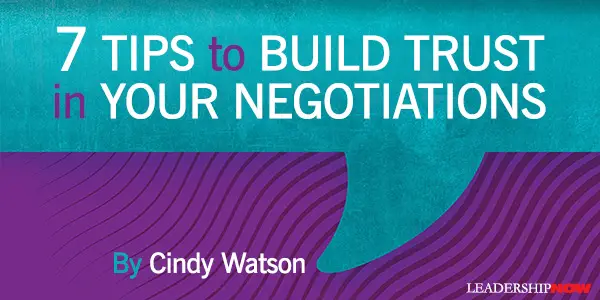
TRUST is a cornerstone of effective negotiations. From trusting yourself to building trust with the other party, trust itself improves long-term outcomes, relationships, and buy-in. Yet we often don’t give it the attention it deserves. We rarely include intentional trust-building as part of our preparation work for negotiations, and this is a mistake. Failing to build trust adversely impacts your ability to influence and persuade other people. In other words, it undermines your effectiveness as a negotiator. What is trust, exactly? For a long time, experts couldn’t agree on how to define trust, let alone how to build it. There were widely divergent opinions across multiple disciplines on the causes of trust, its nature, and its impact. Everyone agreed it was important, but nobody agreed on why or how. A 1995 Academy of Management Review journal article, “An Integrative Model of Organizational Trust,” is often cited for its breakdown of the factors of trustworthiness. It suggests three factors determine whether we find someone trustworthy: Ability: Do I believe the person has the ability to deliver on their promises?
Drawing on this model over a decade later, Stephen M. R. Covey broke the concept of trust into two components: character and competence. Character reflects integrity and intent. Competence draws on capabilities and results. Would you pass the “trust test” based on these qualities? It’s worth asking yourself this question in advance of every negotiation. Women Have a Trust Advantage Surprisingly, women have an edge on the trust front. Justified or not, people tend to trust women more. But why? Perhaps it’s because women aren’t regarded as threats, given their smaller stature and historical lack of power in business and politics. Perhaps it’s because women are more open with their emotions, which is perceived as transparency and candor. Or maybe it’s the perception that women are more likely to ensure everyone’s voice is heard. Someone suggested to me recently that it’s because women are thought of first as mothers and nurturers. Whatever the rationale, it translates to increased innate trust, a definite asset in negotiations. Tips For Building Trust In our fast-paced world, decisions are made quickly. Our speedy determinations are often based on knee-jerk check-ins about whether we trust the other party—or not. So, what can you do to establish this trust? 1. Trust yourself Your first and most important negotiation tool is your own mindset. Building trust with others is hard if you don’t trust yourself. You need to respect yourself to attract the respect of others. Where should you start? Explore the limiting beliefs that have held you back, challenge your inner critic, seek internal versus external validation, be honest with yourself, and celebrate your value. 2. Maintain your reputation Losing trust is easier than building it, and it can take a considerable investment to regain trust once it’s lost. Managing your reputation is key. Being known as someone who is untrustworthy can be the kiss of death in negotiations. So always guard your reputation. 3. Give respect Respect and trust are closely connected. Always treat people with dignity and respect if you expect the same. Doing so builds trust. 4. Bring empathy to the table Be sure to practice active listening. Seek to truly understand the position and needs of the other party. This will lower their defenses and increase their trust. 5. Speak clearly When I say, “Speak clearly,” I’m not talking about diction (although that doesn’t hurt) but rather about being clear about your meaning. Say what you mean and mean what you say. Be transparent and open when possible. Also, speak the “language’” of the other party, using terminology that speaks to them. As an attorney, I learned long ago to master the specialized lingo of my clients. Imagine representing the trucking industry as an attorney without knowing the difference between a truck tractor and a flatbed. You’d lose the client’s trust instantly. The same applies in every sector and industry. 6. Seek mutual gains Approach negotiations with the goal of finding the highest good for all. Don’t just seek to have your needs met; actively look for creative opportunities to find mutually beneficial solutions and outcomes. As you do, be prepared to make concessions as a stepping stone to building trust. But don’t randomly offer up items as a compromise. Instead, be intentional about it. Strategize in advance so you can offer up concessions that will be of value to the other side but are easy gives for you. Name your concessions as you give them. Don’t expect the other party to recognize the concession you’ve made or its value. 7. Be clear about your expectations When identifying your needs in a negotiation—which comes after listening to the other party’s demands—don’t be vague or clever. Be clear. Be prepared to explain your needs. It’s surprising how often we misperceive and attribute false motivations to the other party. You can avoid this problem by offering your explanations in advance to assist in their understanding of your perspective. Communication builds trust. Trust Is a Process Once we master trusting ourselves, trust involves a willingness to rely on someone else. There’s a vulnerability inherent in the giving of it, and our past hurts often make this challenging. Exploring how to give trust allows us to become more trustworthy. It takes intentional practice—and it’s worth it.  
Posted by Michael McKinney at 06:59 AM
05.12.23

Real-Time Leadership: Creating the Space Between Stimulus and Response to Make Wise Choices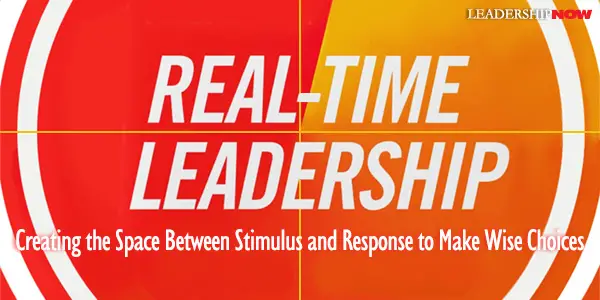
MAKING the most of every moment requires that we slow down and create some space between the challenges that are thrown at us and how we react. When faced with high-stakes challenges, we too often rely on our instincts and pattern recognition that we have developed through years of experience and plow ahead. When the challenge or opportunity is new, relying on our instincts can take us in the wrong direction. To master pivotal moments in real-time, David Noble and Carol Kauffman offer the M.O.V.E. framework in Real-Time Leadership: Find Your Winning Move When the Stakes Are High. Handling high-stakes, high-risk leadership challenges requires preparation and practice. The M.O.V.E. framework helps you to find, open, and use the space you create between the challenge and your response. The framework is described briefly this way: M: Be Mindfully Alert “Mindful Alertness in high-stakes situations means being exquisitely aware of what is needed from you as a leader at this exact moment, so you can lead in real time.” It means being “precise about and flexible with where you put your attention.” To be mindfully alert is about overcoming your instincts. If you automatically turn to your standard playbook you are not being mindfully alert. Being mindfully alert allows you to create space in real time. Every challenge you will face as a leader will involve all or some of what they call the Three Dimensions of Leadership: First is the External Dimension that refers to high-stakes that you want and need to achieve that come from your own aspirations or those that are handed to you. Next is the Internal Dimension is about your character, emotional regulation, values, and who you need to become as a leader to meet those external challenges, goals, and priorities. Finally, there is the Interpersonal Dimension is about how “to lead in the way others need, not how to lead in the way that you’d personally prefer. In any interaction, a leader must have multiple ways to respond to unlock the potential of others.” O: Generate Options Before we move into action, we increase our chance of success if we consider all of our options first. Those options revolve around four basic stances: Lean In (take an active stance), Lean Back (take an analytical stance), Lean With (collaborate with others), and Don’t Lean (be still and take in all that is around and within you to that creative wisdom can surface). The authors call it moving from willpower to waypower—generating at least four options to achieve each of your external priorities and rank them. The stance you employ needs to match the needs of the people you are with. V: Validate Your Vantage Point We need to understand our perception of the situation. Am I right? Or have I gotten it wrong? Am I seeing clearly or is my perception distorted by my own biases or by some other factor? Do I see things from other people’s perspective? Is the stance I am taking the right one? What if I used a different approach? We need to also consider if our vantage point is too high-def (fine-grained detail) or the other extreme, too grainy (just the basic details). Sometimes the situation calls for a wide view especially where creativity is called for. At other times we need to take a narrow focus. These considerations help to determine how best to spend our time. E: Engage and Effect Change Begin by communicating your intent. Boost your signals by doing only what you can do and leave the rest to others. Most leaders will find that their job is not to be the specialist, but the generalist. The authors also address the Real-time challenges of stepping into a new role. The key, they say, is changing your vantage point. Once you have gained clarity on your new vantage point, you can then begin to apply the rest of the MOVE framework. Adjust your behavior to the new relationship dynamics required by your new role. Let people get to know you as much as you can. Remember, too, “You must identify with the whole organization, not just the parts you’re comfortable or familiar with.” Depending on your situation (and time), you may not need to apply the MOVE framework in order. Think of the four elements as a checklist and when one area doesn’t check out, start there. For example, ask yourself, “Do I feel that I have several options I can call on to achieve my priorities, and not just depend on my default approach?” If not, start working there to broaden your options. Great leaders “create a space between stimulus and response and exploit that space—whether it’s seconds, hours, or longer—to make wise choices. The most extraordinary leaders live in that space.” They are centered. It takes practice and commitment to get there. When a group of monks were frustrated because they felt their powers of concentration and mindfulness had plateaued, even though they practiced nonstop, they approached the Dali Lama for advice. The Dali Lama paused for a moment before playfully replying, “I can say that over the past forty years of practice, I have noticed … some improvement.” 
Posted by Michael McKinney at 06:31 AM
05.11.23

Leading Thoughts for May 11, 2023
IDEAS shared have the power to expand perspectives, change thinking, and move lives. Here are two ideas for the curious mind to engage with: Morra Aarons-Mele on labeling: “Such an error in thinking gets you off the hook when it comes to improving a situation. If you think you’re inherently bad (I am a failure), rather than a normal person who makes mistakes or bad decisions (I occasionally fail), you’ve essentially given up before even trying. The same thing occurs when you label other people. ‘You see them as totally bad,’ David Burns writes. ‘This makes you feel hostile and hopeless about improving things and leaves little room for constructive communication.’ Labeling makes it difficult to create a workplace culture with constructive communication and teams committed to improving performance.” Source: The Anxious Achiever: Turn Your Biggest Fears into Your Leadership Superpower Douglas McGregor on motivation: “The motivation, the potential for development, the capacity for assuming responsibility, the readiness to direct behavior toward organizational goals are all present in people. Management does not put them there. It is a responsibility of management to make it possible for people to recognize and develop these human characteristics for themselves.” Source: Leadership & Motivation Look for these ideas every Thursday on the Leading Blog. Find more ideas on the LeadingThoughts index.
Posted by Michael McKinney at 09:26 AM
05.09.23

An Ordinary Man: Gerald R. Ford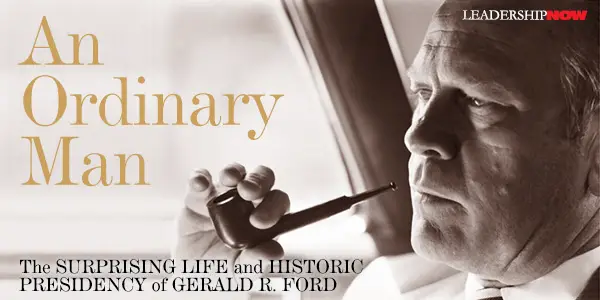
GERALD FORD was an inner-directed leader that gave him quiet strength. He didn’t indulge his ego. A leader with the courage to do what needed to be done despite the consequences. Richard Norton Smith’s extraordinary biography of Gerald Ford, An Ordinary Man, pulls together multiple perspectives to give essential insights into Ford’s thinking and leadership. Ford had moral authority because he lived his values. He believed that you could disagree without being disagreeable. Never taking himself too seriously and wanting to do what was best for the country, he recruited people who knew more than he did about the issues he faced. Ford possessed what Pulitzer Prize-winning author John Hersey called a “stubborn calm at the center” and “a glacial caution.” Curated below are some notes from An Ordinary Man: ☙ “The strongest weapon in a political campaign is the good credited you by word of mouth”—this Ford credo goes a long way toward explaining him and the congressional mindset he personifies. By stressing individual contacts over ideological mandates, Ford defines leadership in transactional terms, constituent service on a grand scale. ☙ When asked the secret of his political success, Ford reveals more than he perhaps intends by replying, “I made everyone else’s problems my problems.” ☙ “Ford never doubted the contribution of college sports to his character or career. Teamwork and grueling preparation were educational values in themselves. The discipline to absorb defeat without yielding to defeatism, to distinguish between constructive criticism and the shouted abuse of armchair quarterbacks—these and other lessons served Ford as guideposts in his political travels.” ☙ As a new congressman, “Ford could often be found at his desk on weekends as well. Frequently Betty joined him there, filing papers or just enjoying his company.” ☙ JFK beckoned to Gerald and Betty Ford to return to Washington on the presidential yacht Honey Fitz. That the Fords should find their names on the most exclusive guest list of the season was no accident. JFK had long since taken the measure of his one-time House colleague. He knew that Ford’s opinion carried weight among lawmakers of both parties, especially on issues of military spending and foreign aid. ☙ Representative Charles Goodall on Ford as Minority Leader: “Of course, he was a nice guy. Even his critics liked him … His secret was that he was almost totally non-vindictive, and he made the effort to make people feel that they were part of the leadership team.” ☙ With counselor Robert Hartmann, former Washington bureau chief for the Los Angeles Times, on the payroll, “Ford could indulge his habit of seeing the good in people, knowing he had another set of eyes to detect and defend against their less admirable qualities.” ☙ In pardoning Nixon, Ford said he had hoped “to change our national focus … to shift our attention from the pursuit of a fallen President to the pursuit of the urgent needs of a rising nation.” ☙ Ford said, “If there’s no place in politics for human compassion, there’s something wrong with politics.” ☙ In visiting Japan and South Korea, “He navigated minefields of controversy with a common touch and uncommon sensitivity to the feelings of his hosts.” ☙ He was “Paying for the mistakes of the last four decades, “Observed George Reedy, onetime White House press secretary to Lyndon Johnson. “He’s been run over by history.” ☙ “Presidents are judged in part by the company they keep, the talent they attract, and their ability to work with subordinates who may surpass them in IQ and charisma. ☙ Don Rumsfeld told Ford, “You know, as you look ahead, you have to have something that you are pushing for. Otherwise, you are not leading.” ☙ Approaching his first anniversary in the Oval Office, there was widespread agreement that the trappings of office had done nothing to inflate Ford’s ego. ☙ “Ford Is Mr. Right,” proclaimed Newsweek. “A kind of anti-hero whose homely virtues of thrift, honesty, hard work, and modesty about the capacities of government exactly suit a diminished national mood.” ☙ “Ford wasn’t that type of man. He wasn’t someone who attempted to sell things by packaging them for the media.” ☙ Ford said at the 1975 Helsinki conference, “History will judge this conference not by what we say today, but by what we do tomorrow—not by the promises we make, but by the promises we keep.” ☙ Clarence Mitchell, chief Washington lobbyist and spokesman for the NAACP, said of Ford that despite their political differences, “nothing will ever change the fact that you entered the office at a time when the Nation was in great travail, and you left it with the respect and, in many instances, the affection of your supporters and many of your opposition as well.” ☙ Harry McPherson, Lyndon Johnson’s White House counsel, wrote, Ultimately Ford had been a successful president not because he was clever, articulate, or a man of vision, “but because he was honest, straightforward, forgiving and possessed of sound judgment.” ☙ Acknowledging his contemporary opposition to the Nixon pardon, Ted Kennedy said, “Time has a way of clarifying past events, and now we can see that President Ford was right.”  
Posted by Michael McKinney at 05:08 PM
05.05.23

Align Your Organization to Succeed in Today’s and Tomorrow’s Changing Environment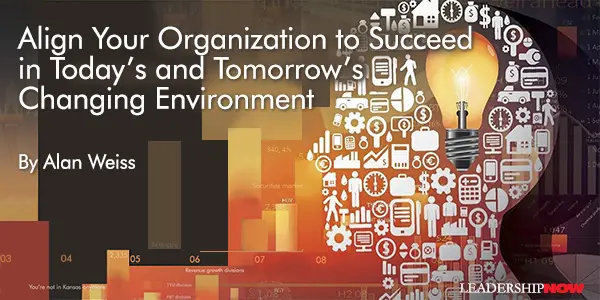
THE PANDEMIC threw all strategies into the junkyard. We now have the opportunity to deal with new realities, but that calls for an entirely new approach to half-century-old strategic processes. Conduct your “forensic implementation analysis” to examine these five dynamic forces: 1. Which Practices to Sustain In this dynamic, you are doing things today that will also serve you well in the future in achieving your vision. Ford’s F-150 pickup truck is the best-selling vehicle in the U.S. and has been for some time. It will probably maintain this status in the immediate future. Ford needs to sustain that type of vehicle and capabilities, whether powered by gas, batteries, hydrogen, or advertising heft. My landscaper has been working with different crews for the 30 years I’ve known him. He consistently sustains a scientific method about grass height, shrub diseases, removal of pests, and so forth. His equipment has changed as his crews have, but not the criteria he uses to keep the property looking great. 2. Which Practices to Improve You may currently be conducting business and engaging in actions that are working well now but won’t be for the future. You can build on their momentum by altering and changing them to maximize progress toward your vision. Championship golf courses use an architecture and difficulty that challenge the best in the world. But as the best keep getting better (improved equipment, better conditioning and strength, smarter course management, better coaches and caddies), it’s vital to improve the courses to meet the new abilities. Second and third cuts of growth may be made longer, bunkers deeper, and hold lengths extended. And the Professional Golf Association (PGA) also makes new rules to adjust to advances, including how many clubs players may carry and what kinds, the construction of the ball, and so forth. The improvements have to be consistent with an existing strength that required augmentation if it’s to remain effective in helping to drive the enterprise forward. 3. Which Practices to Jettison The poorest-run organizations refuse to fire people. Sometimes the excuse is legal concerns, and sometimes it’s someone in human resources trying to prove the department is actually important. Yet terminating poor performers is a service to the performer as much as to the organization. And too many organizations hold on to processes and procedures that not only will not help to reach the vision, but will usually impede progress. 4. Which New Practices to Retain Some adjustments due to the pandemic led to a great many new and effective practices — such as take-out food from high-end restaurants, virtual meetings, and heightened streaming entertainment. What we improvised for the moment should be analyzed as potential longer-term factors for success. You must identify those initiatives, innovations, and even behaviors that you may once have thought were temporary or ad hoc to deal with the pandemic but which are, in actuality, permanent advantages if you allow them to be. 5. Which Practices to Acquire The greatest innovations have come in times of war, pestilence, natural disaster, and so forth. Aside from weaponry, warfare created huge advances in medicine, trauma treatment, and communications. Moreover, innovation needs to be rather immediate. Strategically, you must look to acquisition in support for your strategic factors constantly, given changing times and priorities. You can’t look outside only when you’re failing inside! The point of your new strategic alignment is to ensure that you sustain your strengths, improve what is good but needs to be better, retain what you’ve created, jettison what will no longer support the organization, and acquire what’s missing to lead you toward your vision.  
Posted by Michael McKinney at 06:33 AM
05.04.23

Leading Thoughts for May 4, 2023
IDEAS shared have the power to expand perspectives, change thinking, and move lives. Here are two ideas for the curious mind to engage with: Susan Fowler on letting go of the notion that you can and should motivate people: “Attempting to motivate people is a losing proposition, no matter your resources. Why? Because people are already motivated—but maybe not in the way you want. When you assume people aren’t motivated, you tend to fall back to strategies proven ineffective, wrongheaded, or even counter to what you intended. You incentivize, and when that doesn’t work, you add more carrots (rewards, incentives, bribes). When you run out of carrots, you may try wielding a thicker stick (threats, fearmongering, and punishment). At some point, you realize your attempts to motivate people are fruitless or, even worse, more harmful than beneficial.” Former NASA engineer-project manager and launch director at SpaceX John Muratore on the importance of purpose: “Tom Holloway, a very famous Program Manager, and head of Flight Directors for a long time, told me something very interesting. He said, ‘People ask us what our greatest resource is, and we always say, ‘our people.’ We have some bright people, but the truth of the matter is we don’t have any better people than anybody else has. Our people aren’t our greatest resource. Our sense of mission is our greatest resource. When we lose our sense of mission, we are in the most jeopardy. When we have a high sense of mission, we can overcome any obstacle. Where we get in trouble is where we lose the sense of mission. We get wrapped up in politics, we get wrapped up in budget and schedule. We get wrapped up in personal issues. If we want the best for NASA, we’ve got to keep our mission, focus on what’s our mission.’ If our activity is not clearly, demonstrably, absolutely, most effectively supporting that mission, we’ve got to change what we’re doing. No matter how painful or how difficult. Because our people sense it, and then we no longer get the best out of them. Source: NASA Johnson Space Center Oral History Project Interview, May 14, 2008 Look for these ideas every Thursday on the Leading Blog. Find more ideas on the LeadingThoughts index.
Posted by Michael McKinney at 06:46 AM
05.01.23

First Look: Leadership Books for May 2023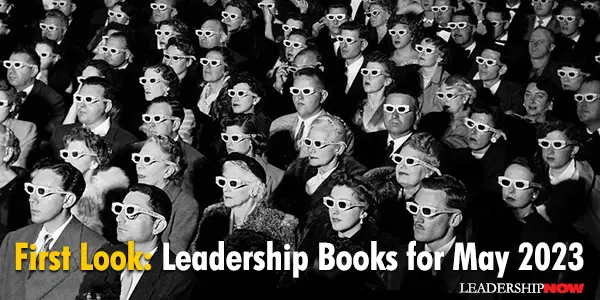
HERE'S A LOOK at some of the best leadership books to be released in May 2023 curated just for you. Be sure to check out the other great titles being offered this month.
Perhaps more than ever before, young people entering the workforce are searching for meaning and authenticity in their careers. This book helps managers understand the postmodern worldview held by generation Z and younger millennials, how it influences their behaviour at work, and how they want to be led in the workplace. Karl Moore takes a practical and down-to-earth approach to understanding what drives millennials and generation Z and how the education system they were brought up in has informed their worldview. Focusing on listening, purpose, reverse mentoring, feedback, and how people relate to each other in the workplace, Generation Why provides the essential tools for effectively working with millennials and generation Z and unlocking their full professional potential.
Blue Ocean Strategy forever changed how the world thinks about strategy. Now W. Chan Kim and Renée Mauborgne offer up a bold, new idea that will transform how we all think about innovation and growth. Disruption dominates innovation theory and practice. But disruption, for all its power, is destructive—displacing jobs, companies, and even entire industries. Are we missing an alternative approach to innovation and growth? In Blue Ocean Strategy, the authors, reveal another way to innovate and grow. Beyond Disruption redefines and expands the existing view of innovation by introducing a new approach, nondisruptive creation, that is free from the destructive displacement that happens when innovators set out to disrupt.
The COVID-19 pandemic caused an awakening that shocked the world — a structural change in how and where people work and live. One thing we now know for certain: Nothing is going back to normal. How organizations adapt to this culture shock will determine whether they thrive or even survive and whether U.S. and global productivity will go up or down. The immediate danger is that most employees will now operate more like independent contractors or gig workers than employees who are loyal and committed to your organization. The risk grows as your workforce’s mentality continues to shift from my life at work to my life at home. It may become nearly impossible to create a culture of committed team members and powerful relationships at work. How will you maintain your customers’ commitment when you’re struggling to create a culture of dedicated employees who build and strengthen relationships with those customers?
Dan Sullivan, the world's leading coach for highly successful entrepreneurs, wants you to know that achieving 10X growth is exponentially easier than striving for 2X growth. Most find this idea confusing at first because simply imagining 10X growth causes them to think they need to do 10X more work to achieve it. However, being a 10X entrepreneur is nothing like what most people think. 10X is not the outcome; it's a counterintuitive process you can apply every time you want exponential growth in your life and business. To make 10X possible, you must focus on expanding what Dan defines as your four most important freedoms—time, money, relationship, and purpose.
What if we could create the best job someone ever had? What if we had that job? The workplace has undergone a massive shift. Remote work and economic instability have depressed innovation and left us disconnected and disengaged. Paychecks no longer buy loyalty, happiness, and effort. Alarmed managers are responding with harsh top-down edicts, layoffs, surveillance and mandatory meetings. Workers are responding by quiet quitting and working their wage. There is a better answer, a human answer, and it is within everyone’s reach. Godin brings us a powerful vision of how we can change the course. The choice is simple: either we keep treating people as disposable, and join in the AI-fueled race to the bottom—or we come together to build a significant organization that enrolls, empowers, and trusts everyone to deliver their best work, no matter where they are.
Unprecedented numbers of Americans are quitting their jobs, rethinking their routines, breaking away from stifling expectations. We're still living through the Great Resignation and quiet quitting. The most suffocating iron cage of all is the premise that each of us must have a career. We must follow a linear path of success, locking into a dream early, always climbing higher, never stopping until we reach the top. Few ideas have created more misery, squandered more human potential, or ruined more relationships. Feiler resolved to help us all imagine better. After dismantling the three lies about work, Feiler lays out the one truth: that each of us must write our own story. Showing that the people who are happiest at work don’t climb, but dig, Feiler introduces the six questions to ask in a workquake that allow us to perform a meaning audit, tapping into our truest selves and our deepest hopes to create the meaning we crave and the success we deserve.
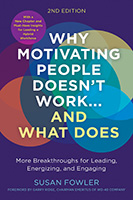 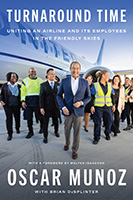  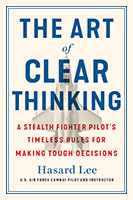 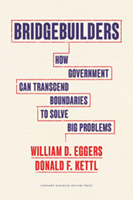 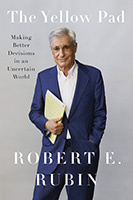 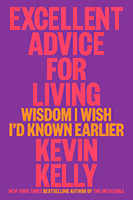 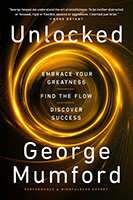
“... a mind needs books as a sword needs a whetstone, if it is to keep its edge.” — George R.R. Martin, A Game of Thrones
Posted by Michael McKinney at 07:12 AM
|
BUILD YOUR KNOWLEDGE


How to Do Your Start-Up Right STRAIGHT TALK FOR START-UPS 
Grow Your Leadership Skills NEW AND UPCOMING LEADERSHIP BOOKS 
Leadership Minute BITE-SIZE CONCEPTS YOU CAN CHEW ON 
Classic Leadership Books BOOKS TO READ BEFORE YOU LEAD |
|